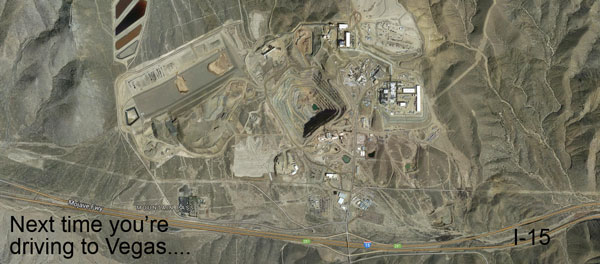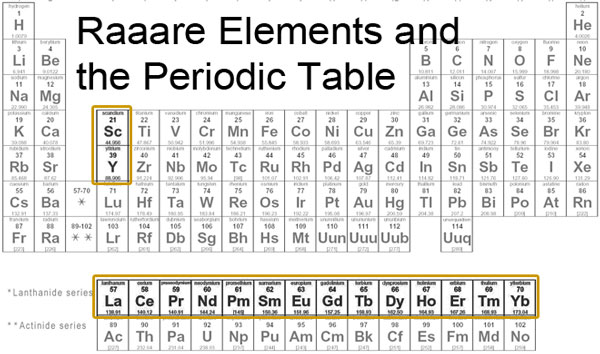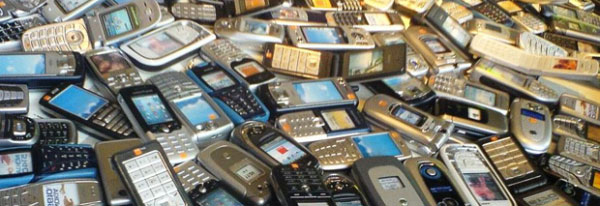As my field group of students eagerly anticipates their cookie bar snack, I break the news to them that before they can partake in their treat, they must “mine” it for the precious gems (chocolate chips) and ores (raisins) that lie inside.

 After they have crumbled their cookies into piles of sorted resources, I ask them what they would say if I told them they had to put their cookie mountain back together. The inevitable groans serve to launch us into a conversation on the pros and cons of mining. Little do most of my students know that these issues are highly relevant here in our own backyard—the Mitsubishi cement plant is located just down highway 18, in Lucerne Valley, and Molycorp’s Mountain Pass mine is located in the nearby Clark Mountain Range. But what exactly are these resources we are so avidly mining, and why do we need them?
After they have crumbled their cookies into piles of sorted resources, I ask them what they would say if I told them they had to put their cookie mountain back together. The inevitable groans serve to launch us into a conversation on the pros and cons of mining. Little do most of my students know that these issues are highly relevant here in our own backyard—the Mitsubishi cement plant is located just down highway 18, in Lucerne Valley, and Molycorp’s Mountain Pass mine is located in the nearby Clark Mountain Range. But what exactly are these resources we are so avidly mining, and why do we need them?

The 17 little known elements that are found in nearly every piece of electronic equipment are known as rare earth elements.
They range from lanthanum to scandium and are essential for everything from iPhones to military defense systems to wind turbines. Molycorp’s Mountain Pass mine was the world’s largest supplier of rare earth elements up through the 1980’s 1 and has recently kicked up production once again. Today, China has far surpassed US production rates and supplies 97% of the world’s rare earth elements 2, but in a society where a new electronic gadget seems to come out every week, our demand for rare earth elements is growing and shows no sign of slowing down. Although these elements are not in actuality particularly rare, the mining process takes years to search for concentrated sources, build facilities, and process the rocks in which these elements are found.

Rare earth elements are not estimated to run out any time soon, but they are still a non-renewable resource—there are a finite amount of them and once used up, we cannot produce more.
We teach our students to use the 4 R’s to lessen our dependence on non-renewable resources: reduce, reuse, recycle, and repair. The EPA reported that in 2009 only 8% of cell phones were collected for recycling 3 , and millions more lie in our desk drawers and cupboards, many of us not quite sure what to do with our retired electronics.

Escalating the matter, Americans are demanding the latest and greatest cell phone, stereo, music device, and television at a faster and faster pace because our previous devices become obsolete over such a short period of time. Flip phones, television monitors, and mp3 players that were once the newest craze are already relics of the past, their programming and parts outdated; many technologies are even designed this way to ensure continued demand for the updated versions.
 Although each device may only contain a few grams of rare earth elements, the vast amounts of no longer used electronics in the United States could be compiled to produce useful amounts of rare earth elements. Televisions, computers, and cell phones also contain trace amounts of other high demand elements such as gold, silver, copper, palladium and platinum.
Although each device may only contain a few grams of rare earth elements, the vast amounts of no longer used electronics in the United States could be compiled to produce useful amounts of rare earth elements. Televisions, computers, and cell phones also contain trace amounts of other high demand elements such as gold, silver, copper, palladium and platinum.
It seems that instead of cookie bars, we should be mining our old electronics. But where exactly should we take our old electronics to recycle them?
Compared to the other 25 states that have laws on e-waste management, the state of California has fairly rigorous legislation when it comes to recycling and dumping electronic waste. In 2003, the state passed the Electronic Waste Recycling Act, which instigated a consumer fee on a subset of electronic sales, helping to subsidize qualified recyclers of those electronic wastes 4.
 Electronic waste needs to be handled responsibly because it often contains toxins such as lead, mercury, and arsenic that can leak into the surrounding groundwater if disposed of improperly. It is illegal to dispose of electronics in landfills in the state of California, but luckily there are plenty of other options to dispose of unwanted electronics. The CalRecycle website has a search engine that allows you to search by county to find a responsible collector near you. All Green Electronics Recycling even allows requests for electronic recycling pick-up directly from your home! )!
Electronic waste needs to be handled responsibly because it often contains toxins such as lead, mercury, and arsenic that can leak into the surrounding groundwater if disposed of improperly. It is illegal to dispose of electronics in landfills in the state of California, but luckily there are plenty of other options to dispose of unwanted electronics. The CalRecycle website has a search engine that allows you to search by county to find a responsible collector near you. All Green Electronics Recycling even allows requests for electronic recycling pick-up directly from your home! )!
So next time you update to the newest television or phone, remember that your old device could be reused again with proper recycling. I challenge you to crack open that junk drawer, dust off those old laptops, music devices, and phones and drop them off at a responsible electronic recycling center near you.
At High Trails Outdoor Science School, we literally force our instructors to write about elementary outdoor education, teaching outside, learning outside, our dirty classroom (the forest…gosh), environmental science, outdoor science, and all other tree hugging student and kid loving things that keep us engaged, passionate, driven, loving our job, digging our life, and spreading the word to anyone whose attention we can hold for long enough to actually make it through reading this entire sentence. Whew…. www.dirtyclassroom.com
- Ramirez, Ainissa. “Where to Find Rare Earth Elements”. PBS. http://www.pbs.org/wgbh/nova/next/physics/rare-earth-elements-in-cell-phones/. ↩
- Ramirez, Ainissa. “Where to Find Rare Earth Elements”. PBS. http://www.pbs.org/wgbh/nova/next/physics/rare-earth-elements-in-cell-phones/. ↩
- International E-Waste Management Network (IEMN), EPA http://www.epa.gov/international/regions/Asia/taiwan/iemn.html. ↩
- International E-Waste Management Network (IEMN), EPA http://www.epa.gov/international/regions/Asia/taiwan/iemn.html. ↩

Comments are closed.